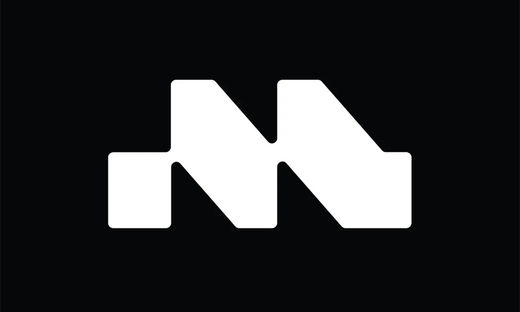How Much Earning Can You Get As A Logo Designer

In the vibrant world of graphic design, logo designers hold a unique place, combining artistry with corporate identity to create symbols that resonate with consumers. As a logo designer, the potential to earn a substantial income is influenced by a myriad of factors, from skill level and experience to the market demands and geographical location. This profession not only requires a keen eye for design but also an understanding of branding and marketing, making it both challenging and rewarding.
For aspiring designers and seasoned professionals alike, exploring the earning potential in this niche can provide valuable insights into career development and financial planning. This article delves into the various aspects that impact a logo designer's earnings, offering a detailed examination of how education, experience, and specialization can play pivotal roles in shaping one’s income. Whether you're freelancing or part of a design agency, understanding these dynamics can help you navigate the competitive landscape and optimize your earning potential as a logo designer.
Freelancing as a Logo Designer
Freelancing offers logo designers unparalleled flexibility and the potential for high earnings, attracting many to this career path. As a freelance logo designer, your income depends heavily on your ability to market your skills and manage business relations effectively. Networking and maintaining a strong online presence are pivotal, as they help in acquiring new clients and building a reputation in the competitive design market.
The freedom to set your own rates allows you to adjust your earning potential based on your experience, portfolio quality, and the complexity of the project. Seasoned freelancers with a robust portfolio can command higher fees, reflecting their proven track record and expertise. Moreover, freelancers benefit from direct client interactions, providing personalized services that can lead to repeat business and referrals—key drivers of income stability and growth.
However, the freelancing route also involves challenges such as fluctuating workloads and the need for continuous self-promotion. Successful freelancers often diversify their income by offering related services such as brand consulting or digital marketing, enhancing their value to clients while stabilizing their earnings.
Working with Design Agencies
Working within a design agency as a logo designer often ensures a more stable income and access to high-profile projects. Agencies provide a structured environment where designers can focus on creative tasks, with access to a broader range of resources and tools than typically available to freelancers. This setup can be particularly beneficial for those starting their careers, as it offers mentorship opportunities and the ability to work on diverse projects.
Logo designers in agencies are usually part of a team, collaborating on projects that require a multidisciplinary approach. This team-based work can enhance one’s skills and expertise, leading to higher earning potential over time. Additionally, working in an agency can provide a regular salary, benefits, and the potential for career advancement through promotions and increased responsibilities.
However, the earnings of logo designers in agencies can vary depending on the agency's size, the complexity of tasks, and geographical location. Larger agencies in major cities often offer higher salaries due to the larger scale of their projects and clients. Moreover, designers at agencies may have less control over their projects compared to freelancers, as they must adhere to the agency’s policies and client requirements.
Overall, agency employment provides logo designers with a balance of steady work and the opportunity to grow professionally, making it a viable option for those looking to build a stable career in design.
Earnings Based on Experience
Experience is a significant determinant of earning potential for logo designers. Novice designers often start with lower earnings as they build their portfolios and client base. However, as designers gain experience and showcase their ability to create compelling logos that effectively communicate a brand's identity, their value in the market increases, allowing them to command higher rates.
Entry-level logo designers might earn modestly, but as they progress to mid-level positions, their exposure to larger projects and more significant clients improves, enhancing their earning prospects. An experienced logo designer with several years under their belt can often negotiate salaries or project fees that reflect their proven expertise and successful track record.
Moreover, experienced designers frequently have opportunities to lead design teams or become senior designers within agencies, which comes with increased responsibilities and correspondingly higher earnings. These professionals can leverage their extensive portfolios and industry reputation to secure projects with prestigious clients who are willing to pay premium rates for high-quality, proven design expertise.
Thus, career growth in logo design is not linear but accelerates with experience. Designers who continuously improve their skills and adapt to industry trends can substantially increase their earnings over time, making experience a valuable asset in this creative field.

Specializing in Niche Markets
Specializing in niche markets can significantly boost a logo designer's earning potential. By focusing on specific industries or types of businesses, designers can become known as experts in that niche, attracting clients looking for specialists rather than generalists. This expertise allows them to command higher fees due to the added value they bring to specialized projects.
For instance, a logo designer who specializes in the technology sector might be sought after by tech startups and established firms alike because of their understanding of the industry’s nuances and audience. Similarly, designers focusing on eco-friendly and sustainable brands can appeal to a rapidly growing market that values specialized knowledge of green initiatives and environmental aesthetics.
Specialization also reduces competition, as fewer designers may have the same focus, providing a competitive edge in marketing oneself to potential clients. By building a strong brand around a specific niche, designers can enhance their visibility and appeal more directly to their target market, leading to more consistent and lucrative work.
Moreover, specializing often leads to deeper client relationships, as designers become integral to the branding strategies of companies within their chosen niches. These relationships can lead to repeat business and referrals, which are valuable for maintaining a steady income and building a sustainable career as a logo designer.
Building a Strong Portfolio
A robust portfolio is essential for any logo designer aiming to increase their earning potential. It serves as a visual resume, showcasing your best work and demonstrating your ability to potential clients. A strong portfolio not only highlights your design skills but also your problem-solving capabilities and your understanding of diverse brand identities.
To build an effective portfolio, logo designers should include a variety of projects that demonstrate versatility and depth. Each project should be accompanied by a brief description that outlines the design process and the challenges addressed, illustrating your strategic thinking and creative solutions. This approach helps potential clients envision how you could tackle their specific needs.
Including testimonials from satisfied clients can also enhance the credibility of your portfolio. Positive feedback and case studies can significantly influence prospective clients’ perceptions, making them more likely to trust you with their projects.
Moreover, continuously updating your portfolio with new and innovative work is crucial. The design industry evolves rapidly, and staying relevant is key to attracting modern businesses looking for fresh, contemporary designs.
Client Acquisition Strategies
Effective client acquisition strategies are vital for increasing earnings as a logo designer. The ability to consistently attract and retain clients determines your financial success and stability in the competitive field of design.
Networking remains one of the most powerful tools for acquiring new clients. Attending industry events, participating in workshops, and engaging in online design communities can help you connect with potential clients and peers who might refer you to new projects.
Social media and online marketing are also critical components. Platforms like Instagram, LinkedIn, and Behance are ideal for logo designers to showcase their work and reach a broader audience. Regularly updating these platforms with high-quality images of your designs, engaging content, and behind-the-scenes processes can attract clients looking for your specific skills.
Additionally, maintaining a professional website that showcases your portfolio, services, and contact information is crucial. SEO optimization of your website ensures that it appears in search results when potential clients are looking for logo designers, directly affecting your ability to earn more by gaining higher visibility. Referral programs can also be effective. Offering incentives for clients to refer new business to you can lead to increased projects and, consequently, higher earnings.
Utilizing Digital Tools and Software
In the competitive field of logo design, leveraging advanced digital tools and software can significantly enhance a logo designer's earning potential. Mastery of industry-standard software like Adobe Illustrator, CorelDRAW, and Sketch is essential, as these tools offer extensive features that allow for the creation of sophisticated and scalable vector graphics, which are fundamental in logo design.
Incorporating software that facilitates collaboration and feedback, such as Figma or InVision, can also add value to your services, making the design process more interactive and client-friendly. These platforms streamline revisions and approvals, saving time and enhancing client satisfaction, which can lead to repeat business and referrals—key factors in increasing earnings.
Furthermore, staying updated with new technology and software advancements can set you apart as a logo designer. This includes exploring new design software releases and updates, as well as integrating graphic design trends into your work, thereby appealing to modern clients and markets looking for cutting-edge designs.
Utilizing project management tools can also improve efficiency in handling projects and clients. Tools like Trello or Asana help manage workflows and deadlines, ensuring projects are completed on time and clients are kept informed, which enhances professionalism and reliability.

Networking and Industry Connections
Networking and building strong industry connections are crucial for logo designers aiming to enhance their earning potential. Establishing a broad network can lead to more job opportunities, collaborations, and valuable insights into industry trends and client needs. Attending industry conferences, seminars, and workshops is a highly effective way to meet peers, mentors, and potential clients. These events provide a platform for sharing knowledge, showcasing your work, and learning about new tools and techniques that can improve your design skills and business acumen.
Joining professional associations or the Graphic Artists Guild, can also be beneficial. Membership often includes access to exclusive resources, job boards, and networking events that can help logo designers connect with like-minded professionals and potential clients. Social media platforms, particularly LinkedIn, play a pivotal role in networking. Actively engaging with content, sharing your projects, and participating in discussions can elevate your visibility in the design community, attracting attention from prospective clients and collaborators.
Additionally, building relationships with other creatives can lead to partnerships where skills are complementary. Collaborating on projects can not only increase your exposure and client base but also allow you to tackle larger, more lucrative projects than you might manage solo. Effective networking and fostering industry connections can thus significantly impact your earnings, making it a vital strategy for any logo designer looking to succeed and thrive in this dynamic industry.
Upselling Additional Services
As a logo designer, expanding your service offerings can significantly boost your earning potential. Upselling additional services such as branding packages, business card designs, and social media graphics can provide clients with a comprehensive design solution, enhancing their brand's cohesion and your own revenue streams.
When presenting a logo design to a client, consider offering a full brand identity package that includes typography, color palettes, and usage guidelines. This holistic approach not only increases the project's value but also helps clients maintain a consistent brand image across all platforms.
Additionally, offering related digital design services, like website design or digital marketing materials, can appeal to clients looking to establish or refresh their online presence. These services complement the logo design and are often necessary for clients, making it a convenient and attractive option.
It's important to communicate the value of these additional services effectively. Explain how each service can enhance their brand's impact and visibility, helping them to achieve their business goals. Demonstrating the direct benefits to their business can encourage clients to invest in more comprehensive packages.
Creating and Selling Templates
Logo designers can diversify their income streams and maximize their earnings by creating and selling logo templates. This approach allows designers to leverage their skills to generate passive income while continuing to work on custom projects.
Designing a range of logo templates that cater to various industries can attract a wide audience of small business owners, startups, and other professionals looking for cost-effective design solutions. These templates can be sold on design platforms like Etsy, Creative Market, or your own website, providing continuous revenue without the ongoing effort of custom work.
When creating templates, consider different branding styles and trends to appeal to diverse preferences. Each template should be customizable to some extent, allowing buyers to adapt the design to fit their specific brand needs while keeping the integrity of the original design.
Marketing your templates effectively is crucial. Utilize your social media platforms, design blogs, and email newsletters to showcase your templates and explain their benefits. Highlighting the quality of your designs and the ease with which clients can customize them will help in attracting more buyers.
Conclusion
The earning potential for logo designers is as varied as the industry itself. By continuously developing skills, leveraging digital tools, and engaging with the design community, designers can significantly increase their income. Whether through freelancing, agency work, or selling digital products, there are numerous opportunities to maximize earnings. Success in this field requires not only creativity and technical prowess but also a strategic approach to business and client relationships. By exploring these diverse avenues and adapting to industry trends, logo designers can thrive financially and creatively in a dynamic professional landscape.
Let Us Know What You Think!
Every information you read here are written and curated by Kreafolk's team, carefully pieced together with our creative community in mind. Did you enjoy our contents? Leave a comment below and share your thoughts. Cheers to more creative articles and inspirations!
















Leave a Comment